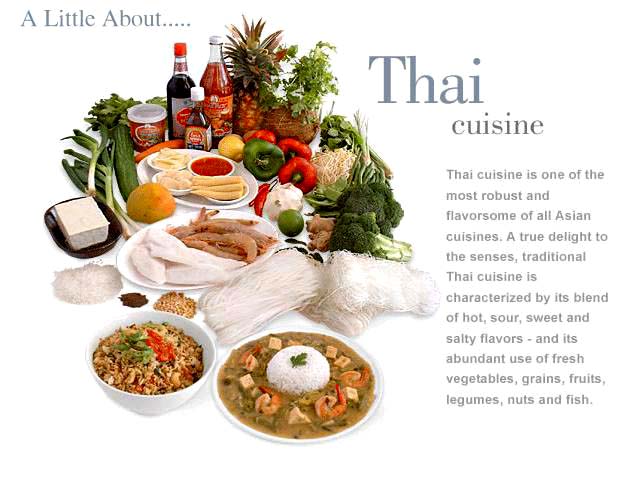Thai Spices
Amazing Thai Herbs and Spices
Many herbs and spices used in Thai cuisine have beneficial medicinal properties. Herewith some examples.
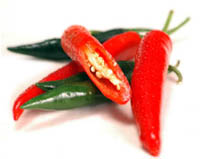
CHILLI
"Phrik" in Thai
. Chilli is an erect, branched,
shrub-like herb with fruits used as garnishing and flavoring in Thai
dishes. There are many different species. All contain capsaicin, a
biologically active ingredient and vitamin C, beneficial to the
respiratory system, blood pressure and heart. Other therapeutic uses
include being a stomachic, carminative and antiflatulence agent, and
digest
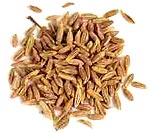
CUMIN (Cummin, Zeera)
"Yi-ra" in Thai. Cumin is a small shrubbery herb,
the fruit of which contains 2 to 4 % volatile oil with a pungent odor,
and which is used as a flavoring and condiment. Cumin's therapeutic
properties manifest as a stomachic, bitter tonic, carminative, stimulant
and astringent.
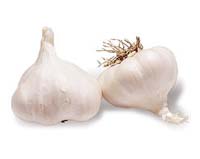
GARLIC
"Kra-thiam" in Thai. Garlic is an annual
herbaceous plant with underground bulbs comprising several cloves. Dried
mature bulbs are used as aflavouring and condiment in Thai cuisine. The
bulbs contain 0.1 to 0.36 % garlic oil and organic sulfur compounds.
Therapeutic use are as antimicrobial, diaphoretic, diuretic,
expectorant, antiflatulence and cholesterol lowering agents.
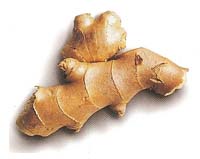
GINGER
"Khing" in Thai. Ginger is an erect plant with
thickened, fleshy and aromatic rhizomes. Used in different forms as a
food, flavouring and spice, Ginger rhizomes contain 1 to 2 % volatile
oil. Ginger's therapeutic uses are as a carminative, antinauseant and
antiflatulence agent.
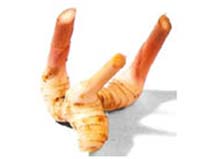
GREATER GALANGA(False Galangal, Galangal)
"Kha" in Thai. Greater Galanga is an erect annual
plant with aromatic, ginger-like rhizomes, and commonly used in Thai
cooking as a flavouring. The approximately 0.04 volatile oil content has
therapeutic uses as carminative, stomachic, antirheumatic and
antimicrobial agents.
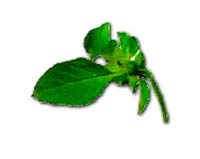
HOARY BASIL
"Maeng-lak" in Thai. Hoary Basil is an annual
herbaceous plant with slightly hairy and pale green leaves, eaten either
raw or used as a flavouring, and containing approximately 0.7 %
volatile oil. Therapeutic benefits include the alleviation of cough
symptoms, and as diaphoretic and carminative agents.
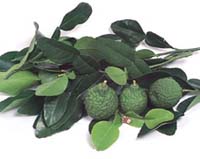
KAFFIR LIME (Leech Lime, Mauritus Papeda, Porcupine Orange)
"Ma-krut" in Tha.i The leaves, peel and juice of
the Kaffir Lime are used as a flavouring in Thai cuisine. The leaves and
peel contain volatile oil. The major therapeutic benefit of the juice
is as an appetizer.
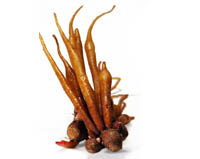
"KRA-CHAI" in Thai
(No Common English Name) This erect annual plant
with aromatic rhizomes and yellow-brown roots, is used as a flavouring.
The rhizomes contain approximately 0.8 % volatile oil. The plant has
stomachache relieving and antimicrobial properties, and therapeutic
benefits as an antitussive and antiflatulence agent.
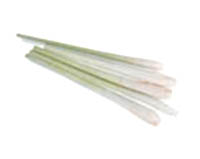
LEMON GRASS (Lapine)
"Ta-khrai" in Thai. This erect annual plant
resembles a coarse grey-green grass. Fresh leaves and grass are used as a
flavouring. Lemongrass contains 0.2-0.4 % volatile oil. Therapeutic
properties are as a diuretic, emmanagogue, antiflatulence, antiflu and
antimicrobial agent. When boiled in hot water, is good for stomach ache. An example dish where lemon grass is used is Tom Yum
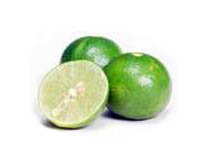
LIME (Common Lime)
"Ma-nao" in Thai. Lime is used principally as a
garnish for fish and meat dishes. The fruit contains Hesperidin and
Naringin, scientifically proven antinflammatory flavonoids. Lime juice
is used as an appetizer, and has antitussive, antiflu, stomachic and
antiscorbutic properties.
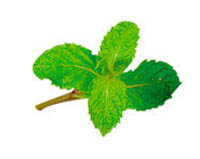
MARSH MINT
"Sa-ra-nae" in Thai. The fresh leaves of
this herbaceous plant are used as a flavouring and eaten raw in Thai
cuisine. Volatile oil contents give the plant several therapeutic uses,
including carminative, mild antiseptic, local anaesthetic, diaphoretic
and digestant properties.
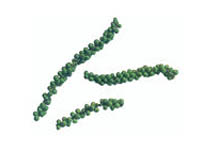
PEPPER
"Phrik-Thai" in Thai. Peper is a
branching, perennial climbing plant from whose fruiting spikes both
white and black pepper are obtained. Used as a spice and condiment,
Pepper contains 2-4 % volatile oil. Therapeutic uses are as carminative,
antipyretic, diaphoretic and diuretic agents.

SACRED BASIL (Holy Basil)
"Ka-phrao" in Thai. Sacred Basil is an
annual herbaceous plant that resembles Sweet Basil but has narrower and
oftentimes reddish-purple leaves. The fresh leaves, which are used as a
flavouring, contain approximately 0.5 % volatile oil, which exhibits
antimicrobial activity, specifically as a carminative, diaphoretic,
expectorant and stomachic.
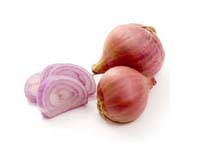
SHALLOT
"Hom, Hom-lek, Hom-daeng" in Thai.
Shallots, or small red onions, are annual herbaceous plants. Underground
bulbs comprise garlic-like cloves. Shallot bulbs contain volatile oil,
and are used as flavouring or seasoning agents. Therapeutic properties
include the alleviation of stomach discomfort, and as antithelmintic,
antidiarroheal, expectorant, antitussive, diuretic and antiflu agents.
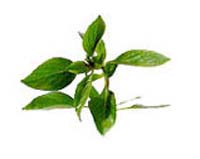
SWEET BASIL (Common Basil)
"Ho-ra-pha" in Thai. Sweet Basil is an
annual herbaceous plant, the fresh leaves of which are either eaten raw
or used as a flavouring in Thai cooking. Volatile oil content varies
according to different varieties. Therapeutic properties are as
carminative, diaphoretic, expectorant, digestant and stomachic agents.
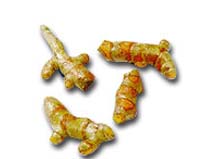
TURMERIC (Curcuma, Indian Saffron, Yellow Root)
"Kha-min" in Thai. Turmeric is a member of
the ginger family, and provides yellow colouring for Thai food. The
rhizomes contain 3 - 4 % volatile oil with unique aromatic
characteristics. Turmeric's therapeutic properties manifest as a
carminative, antiflatulence and stomachic.
© ALL RIGHTS RESERVED MOMOTHAIFOOD 2010




